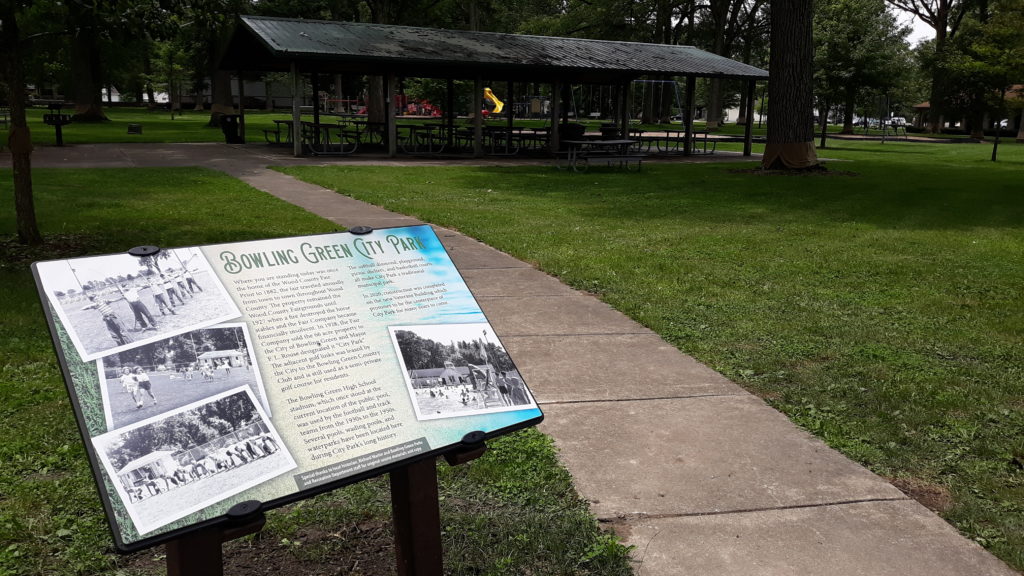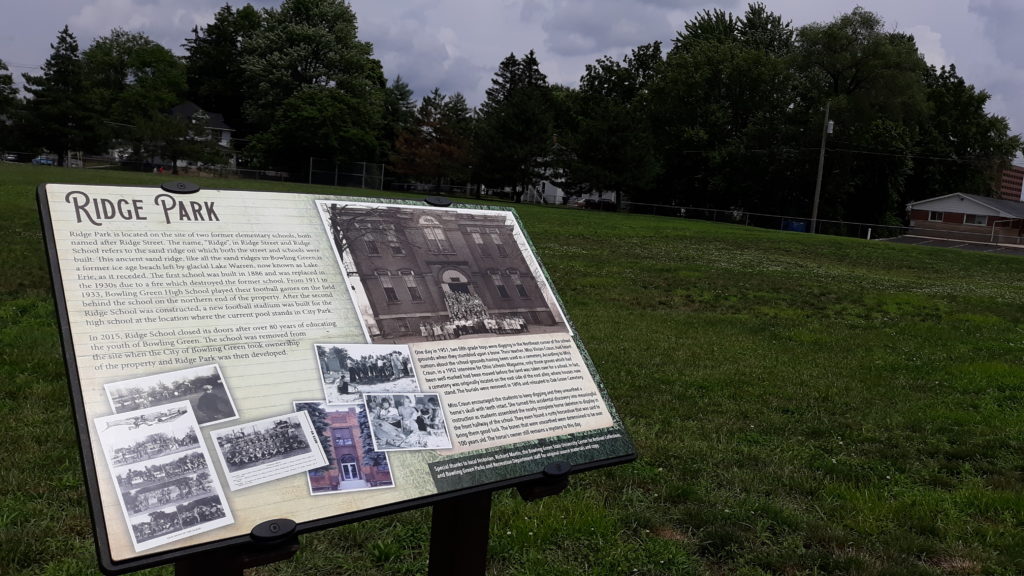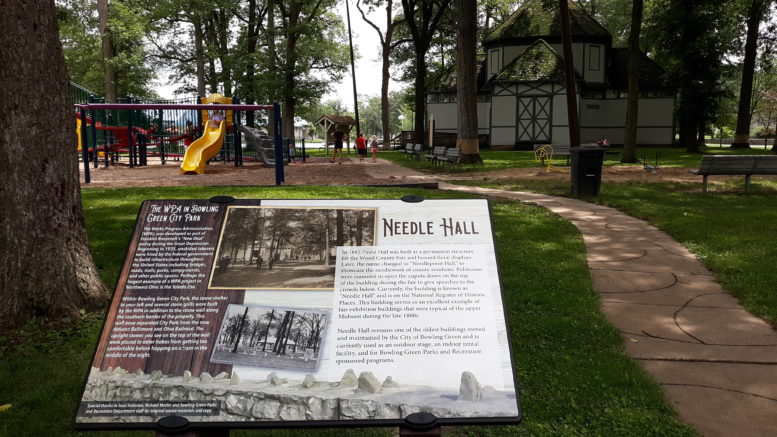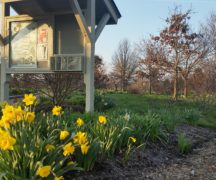By JAN LARSON McLAUGHLIN
BG Independent News
Park patrons will now be able to get a history lesson as they meander through City Park and Ridge Park.
Interpretive signs have been erected in the park to share the pasts of the parkland.
“Each one of them has a unique history, and we want people to connect with them,” said Chris Gajewicz, Bowling Green’s natural resources coordinator.
For example, did you know that children playing outside at Ridge School in 1951 found the skeletal remains of a horse buried in the schoolyard. Their teacher encouraged them to keep digging, until the entire horse was unearthed.
Or that City Park was once home to the Wood County Fair and lady temperance league.
Or that the stones spiking upward from the stone fence around City Park were meant to discourage “hobos” from getting comfortable there as they waited to hop a train.
“These are little pieces of interesting Bowling Green history,” Gajewicz said. “These are things lost to the ages.”
But with the help of Dick Martin, the two men tracked down the history for the new signs.
“He and I talked about this years ago,” Gajewicz said of Martin. “He really knows so much local history. We found out things we didn’t know.”

When the county fair was held in the now-City Park, it boasted a half-mile racetrack, large grandstand, livestock barns, exhibition halls and organization buildings such as the Women’s Christian Temperance Union.
The building now called Needle Hall was originally called Floral Hall when it was built in 1882. It was later changed to “Needlepoint Hall” to showcase needlework during the fair. Politicians were rumored to open the cupola doors on top of the building during the fair to give speeches to the crowds below.
The fair fell on hard times during the mid-1920s, and following a fire that destroyed the horse stables in 1927, the fair closed its gates at that location.
The 66-acre fairgrounds was sold to the city of Bowling Green in 1928, and became City Park.
During the Great Depression, the Works Progress Administration built the park’s stone shelterhouse, several stone grills, and the stone wall that stretches along the southern border of the park, separating the park from a railroad track. The upright stones on the top of the wall were meant to deter hobos from getting too comfortable before hopping a train in the middle of the night.
The Bowling Green High School football stadium once sat where the city pool is now – with the former fair grandstands serving as football bleachers, Martin said.
“Probably a lot of people didn’t realize what went on there,” Martin said.

At Ridge Park, the sign explains that the name originated from the sand ridge left behind there by glaciers.
Before a school was built there, the property was used as a waste area. Research showed that a cemetery may have once been located at Ridge Park, prior to those buried being moved to Oak Grove Cemetery, Martin said.
The first school built on the site burned down around 1930, and was replaced. That school was closed in 2015.
As for the horse skeleton – it was proudly displayed in the school for years.
“No one seems to know where it went – but it was there,” Gajewicz said.
The historic sign project received a grant from the Wood County Park District.





